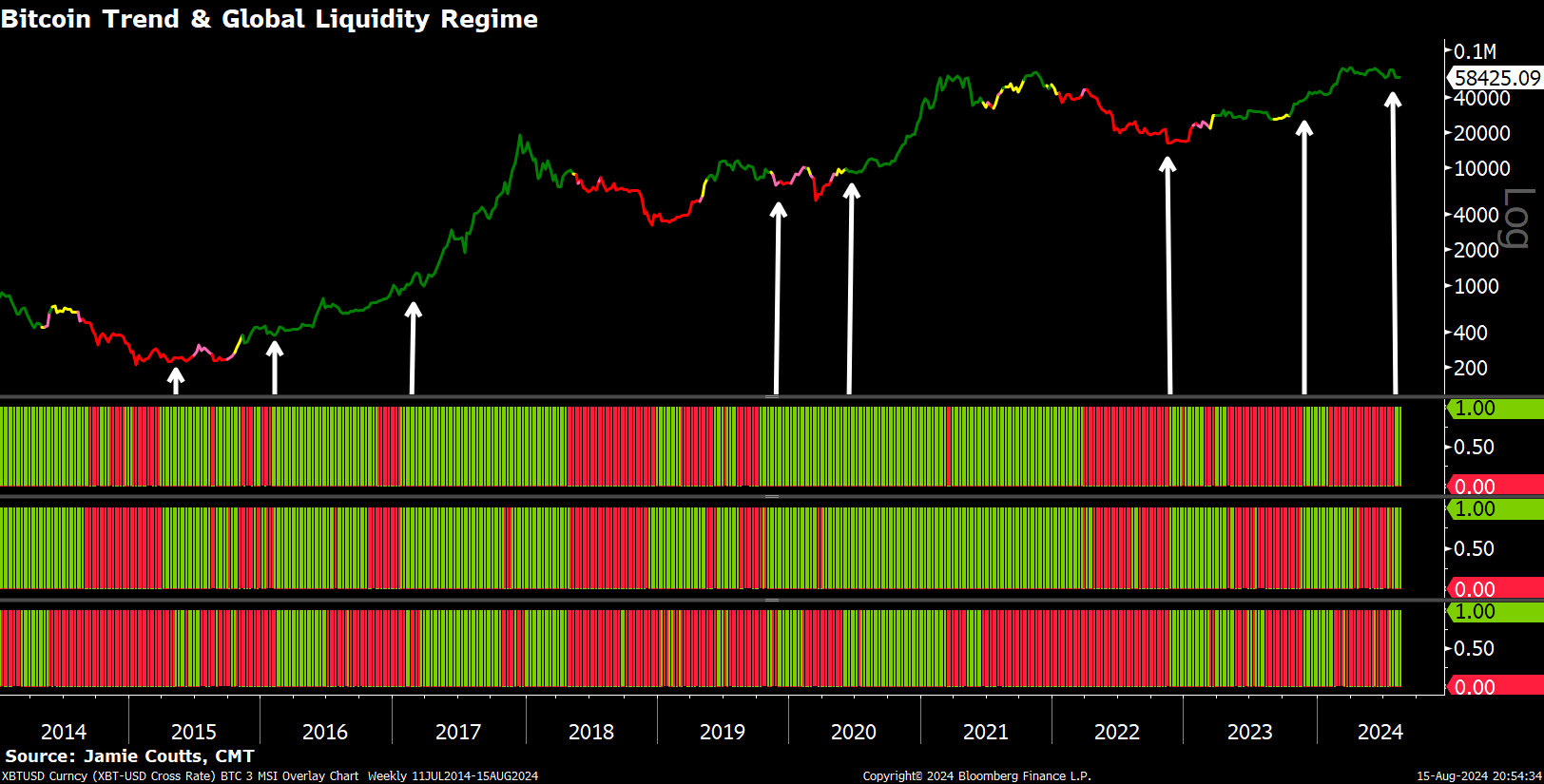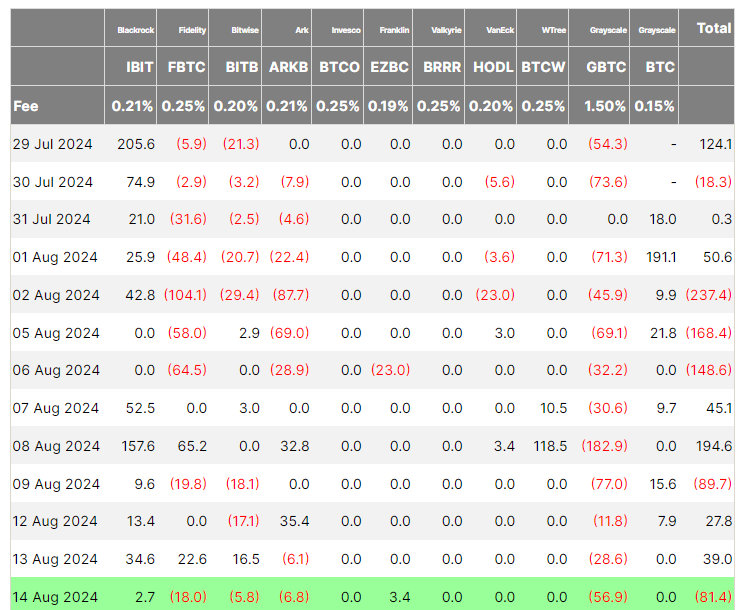For the first time in about a year, an important Bitcoin bull signal has flashed, indicating a potential price breakout. The global liquidity model’s bull Bitcoin signal was shared by Jamie Coutts, the chief crypto analyst at Real Vision. In a post on X on August 15, Coutts wrote that he expects Bitcoin to rise much higher based on this signal:
“My composite global liquidity momentum model (MSI) has provided the first Bull regime signal since November 2023. Remember, Bitcoin rose 75% from November to April before the regime turned Bear.”

Important Statements from the Famous Analyst
According to Coutts, the same bull signal preceded a 19-fold Bitcoin rally in the 2017 cycle and a six-fold rally in the 2020 cycle. Coutts predicts that the bull signal could translate to a two to three-fold increase in Bitcoin’s price. However, he explained that this largely depends on the performance of the US Dollar Index (DXY) and overall global liquidity:
“For Bitcoin to reach this target, the DXY must be well below 101, driven by ongoing central bank injections. This would push global M2 well above $120 trillion in this cycle.”
However, Bitcoin prices may face headwinds in the short term. Over $1.4 billion in Bitcoin options will expire at 11:00 AM on August 16 if Bitcoin fails to recover above $60,000.
Details on the Subject
The ever-expanding global M2 money supply could help Bitcoin rise above $60,000. According to Coutts, last month the Bank of Japan added $400 million, while the People’s Bank of China added $97 billion in credit to the global monetary base, increasing it by $1.2 trillion. Coutts added that this trend is likely to continue due to the fractional reserve system’s economy:
“This is the natural state in a credit-based fractional reserve system. The money supply must continuously expand to support unpaid debt. Otherwise, everything will collapse.”
However, Bitcoin’s price movement will largely depend on inflows from US spot Bitcoin exchange-traded funds (ETFs), which have recently stagnated. According to Farside Investors data, after two consecutive days of positive inflows, ETF inflows turned negative on August 14, with US ETF funds seeing a total negative outflow of $81 million.


 Türkçe
Türkçe Español
Español









